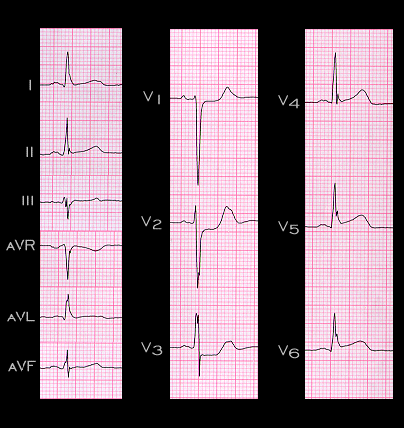
Involvement of the posterior wall may also accompany lateral wall ischemia and infarction. The ECG shown here is from a 44 year old male with chest pain. There is slight ST elevation in leads I and aVL and more obvious ST elevation in leads V5 and V6. This indicates acute transmural ischemia/infarction of the lateral wall. There is also marked ST depression in leads V2 and V3 and lesser ST depression in V1. These changes are the reciprocal of the ST elevation the would be expected in leads placed on the left posterior chest wall, opposite leads V2 and V3, i.e. posterior leads placed in the V8 and V9 positions, and indicate posterior wall involvement. Note that there are no ST segment changes in leads II, III or aVF, the inferior leads. This observation suggests that blood flow the in the posterior descending coronary artery was preserved and that the culprit lesion was not in its parent vessel, i.e, either the right or circumflex coronary artery.
